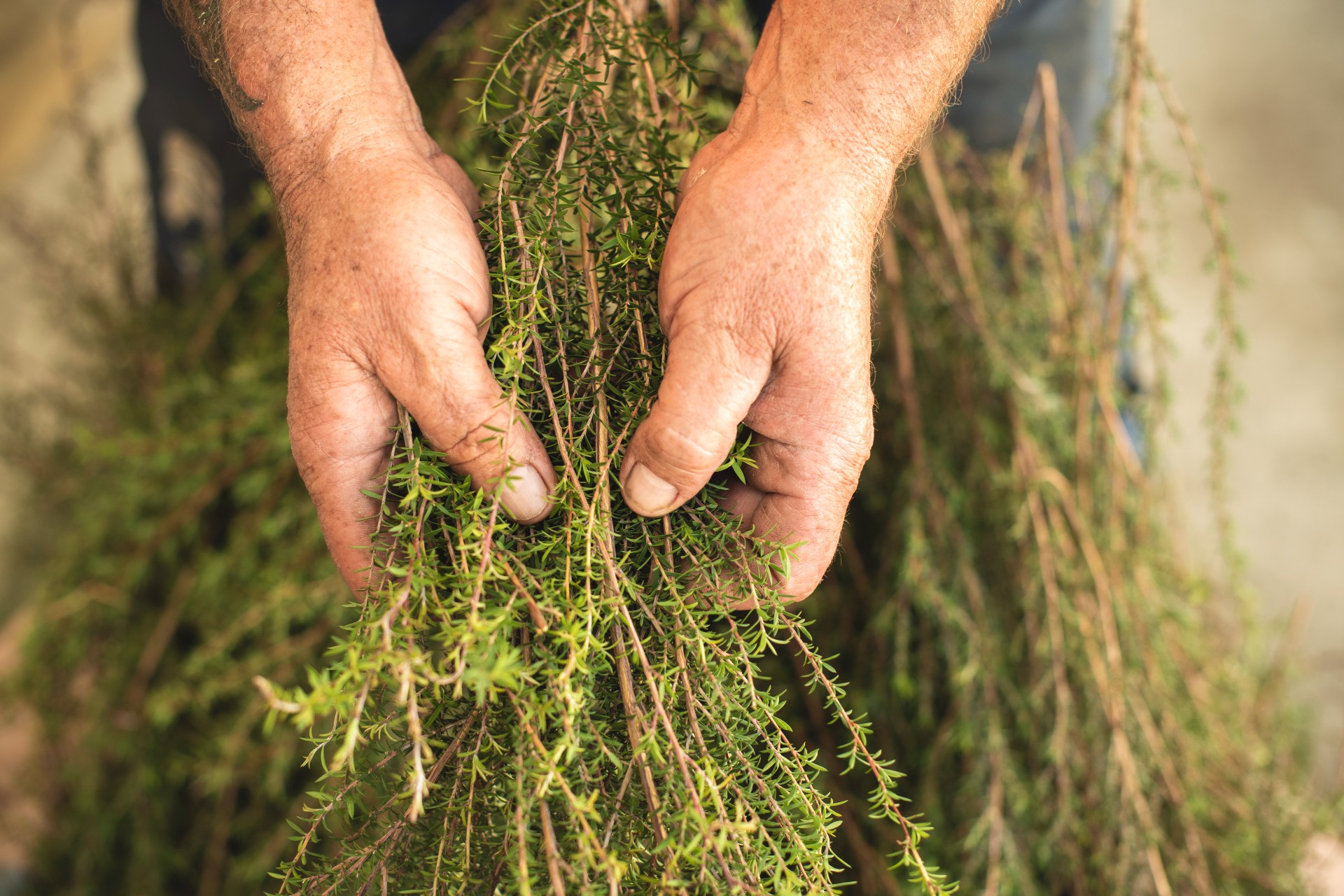What is it?
Evergreen Mānuka (Leptospermum scoparium) trees grow all over New Zealand.
For centuries, Māori people have used mānuka bark, leaves and flowers to treat burns, cuts, wounds, skin and eye infections, as a mouth wash and a remedy for pain and inflammation.
A more recent discovery is bioactive-rich essential oil extracted from oil sacs in mānuka leaves.
Featured
The Facts
- 100% natural, bioactive rich essential oil
- Globally unique, multi-benefit skin health ingredient
- Safe, effective and backed by 1000+ scientific publications
- Contains triketones with incredible antimicrobial properties
- Contains sesquiterpenes with powerful anti-inflammatory and antioxidant properties
- 1000x more effective than mānuka honey against common skin bacteria
- 30x more powerful than Australian tea tree oil against common skin bacteria
- Formulations with just 0.2 to 2% achieve high impact
Download the mānuka oil white paper
What is Mānuka Oil?
Mānuka oil composition depends on its chemical identity or ”chemotype”. Chemotypes are determined by factors such as location, temperature, humidity, rainfall, luminosity, UV radiation, altitude, soil conditions, seasonality, circadian cycles etc.,
Mānuka oil from the East Cape region is called the high triketone chemotype. It has at least 20% β-triketone compounds, mostly flavesone, leptospermone and iso-leptospermone. East Cape mānuka oil is medically significant and globally unique because of its antimicrobial (antibacterial, antiviral and antifungal) properties. It also has high levels of sesquiterpenes that makes it an ideal skin care ingredient with anti-inflammatory, anti-oxidant and antiaging properties.
Mānuka that grows in most other parts of New Zealand has less than 5% b-triketones. These oils are rich in terpenes such as myrcene, humulene, caryophyllene, pinene, linalool, copaene, elemene, selinene, calamenene, cubebene and cadinene.
Mānuka that grows in Australia, in Victoria and Tasmania, has a different essential oil profile with no β-triketones.

Composition
East Cape mānuka oil contains more than 70 natural bioactive chemical compounds. These include β-triketone compounds, mainly leptospermone, iso-leptospermone and flavesone with antibacterial, antifungal, antiviral and herbicidal properties and sesquiterpenes such as calamenene, cadinene, cubebene, elemene, caryophyllene and isoledene with antioxidant and anti-inflammatory properties. Some of these sesquiterpenes are reported to have antimicrobial and anticancer properties.
Antibacterial Action
Mānuka oil kills bacteria by disrupting the bacterial cell membrane and causing the leakage of cell contents.
In contrast with antibiotics that have just one or two active ingredients, mānuka oil is a complex mix of antibacterial constituents with multiple mechanisms of action. It is difficult if not impossible for bacteria to develop multiple resistance mechanisms to negate the power of all these bioactive compounds.
Antiaging Power of Mānuka Oil
Manuka oil is an incredible anti-aging treatment since it calms skin inflammation and promotes collagen production in the skin. Skin inflammation causes premature skin aging and weakened skin structure stemming from collagen and elastin degradation and skin barrier function impairment. Research shows that mānuka oil suppresses the production of inflammatory cytokines and promotes the production of collagen.

